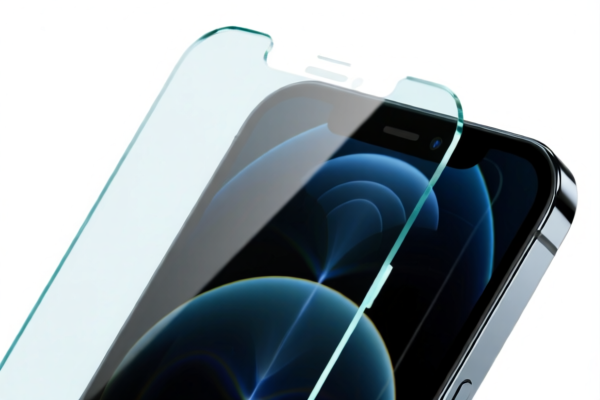| HS Code | Official Doc | Tariff Rate | Origin | Destination | Effective Date |
|---|---|---|---|---|---|
| 3919102055 | Doc | 60.8% | CN | US | 2025-05-12 |
| 3919905060 | Doc | 60.8% | CN | US | 2025-05-12 |
| 3921904010 | Doc | 34.2% | CN | US | 2025-05-12 |
| 3921904090 | Doc | 34.2% | CN | US | 2025-05-12 |
| 9620005000 | Doc | 60.3% | CN | US | 2025-05-12 |
| 9620005500 | Doc | 58.3% | CN | US | 2025-05-12 |
| 8524111000 | Doc | 45.0% | CN | US | 2025-05-12 |
| 8524190000 | Doc | 45.0% | CN | US | 2025-05-12 |
| 8529905500 | Doc | 55.0% | CN | US | 2025-05-12 |




A screen protector is a shield applied to the display of a digital device – typically smartphones, tablets, laptops, and digital cameras – to protect it from scratches, cracks, and other damage.
Material
Screen protectors are manufactured from a variety of materials, each offering different levels of protection and functionality:
- Thermoplastic Polyurethane (TPU): A flexible plastic that absorbs shock and provides good scratch resistance. TPU protectors are known for self-healing properties, allowing minor scratches to disappear over time. They generally offer less clarity than glass protectors.
- Polyethylene Terephthalate (PET): A more affordable plastic option, PET protectors offer basic scratch protection. They are less durable than TPU and glass, and are prone to scratching themselves.
- Tempered Glass: A chemically strengthened glass offering high levels of impact and scratch resistance. Tempered glass protectors provide excellent clarity and a smooth feel, similar to the device’s original screen. They are more rigid than plastic protectors and can crack upon impact to absorb the force, protecting the underlying screen.
- Hybrid Protectors: Combine multiple materials, often TPU and PET, to achieve a balance of flexibility, scratch resistance, and impact protection.
Purpose & Function
The primary purpose of a screen protector is to prevent damage to the device’s screen. This includes:
- Scratch Resistance: Protecting against scratches from keys, coins, and other abrasive materials.
- Impact Protection: Absorbing shock from drops and impacts, reducing the likelihood of cracks and shattering.
- Smudge & Fingerprint Resistance: Some protectors have oleophobic coatings that repel oil and reduce the visibility of fingerprints.
- Glare Reduction: Matte screen protectors can reduce glare and reflections, improving visibility in bright environments.
- Privacy: Privacy screen protectors limit the viewing angle, making it difficult for others to see the screen content.
Usage Scenarios
Screen protectors are commonly used in situations where the device is at risk of damage:
- Everyday Carry: Protecting against scratches from keys and other objects in pockets and bags.
- Outdoor Use: Protecting against scratches from sand, dirt, and other debris.
- Work Environments: Protecting against scratches and impacts in demanding work environments.
- High-Risk Activities: Protecting against damage during sports, travel, or other activities.
Common Types
- Film Protectors: Thin, flexible protectors made from PET or TPU.
- Glass Protectors: Made from tempered glass, offering high levels of protection.
- Privacy Protectors: Limit viewing angle to protect sensitive information.
- Anti-Glare Protectors: Reduce glare and reflections for improved visibility.
- Blue Light Blocking Protectors: Filter out blue light emitted from the screen, reducing eye strain.
- Curved Protectors: Designed for devices with curved screens, providing full coverage.
- Self-Healing Protectors: Made from TPU with self-healing properties to repair minor scratches.
Based on the declared goods "SCREENPROTECTOR", the following HS codes are potentially relevant:
- 3919102055: This HS code falls under Chapter 39, which covers plastics and articles thereof. Specifically, it relates to self-adhesive plates, sheets, film, foil, tape, strip and other flat shapes of plastics, whether or not in rolls, in rolls of a width not exceeding 20 cm. The tax rate details include a basic tariff of 5.8%, an additional tariff of 25.0%, and an additional tariff of 30.0% after April 2, 2025, resulting in a total tariff of 60.8%. This code is applicable if the screen protector is made of plastic and supplied in rolls with a width of 20 cm or less.
- 3919905060: This HS code also falls under Chapter 39, covering plastics and articles thereof. It relates to self-adhesive plates, sheets, film, foil, tape, strip and other flat shapes of plastics, whether or not in rolls, categorized as "Other". The tax rate details are the same as HS code 3919102055: a basic tariff of 5.8%, an additional tariff of 25.0%, and an additional tariff of 30.0% after April 2, 2025, resulting in a total tariff of 60.8%. This code is applicable if the screen protector is made of plastic and not supplied in rolls or if the roll width exceeds 20 cm.
- 8524111000: This HS code falls under Chapter 85, which covers electrical machinery and equipment. Specifically, it relates to flat panel display modules, whether or not incorporating touch-sensitive screens, without drivers or controls circuits, of liquid crystals. The tax rate details include a basic tariff of 0.0%, an additional tariff of 25.0%, and an additional tariff of 20.0% after April 2, 2025, resulting in a total tariff of 45.0%. This code may be applicable if the screen protector is a complete module incorporating liquid crystals.
- 8524190000: This HS code also falls under Chapter 85, covering electrical machinery and equipment. It relates to flat panel display modules, whether or not incorporating touch-sensitive screens, without drivers or controls circuits, categorized as "Other". The tax rate details are the same as HS code 8524111000: a basic tariff of 0.0%, an additional tariff of 25.0%, and an additional tariff of 20.0% after April 2, 2025, resulting in a total tariff of 45.0%. This code may be applicable if the screen protector is a complete module without liquid crystals.
Regarding HS codes 3919102055 and 3919905060, please note that the additional tariff will change to 30.0% after April 2, 2025.
Customer Reviews
No reviews yet.